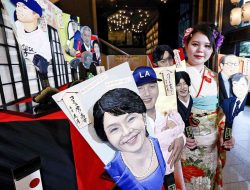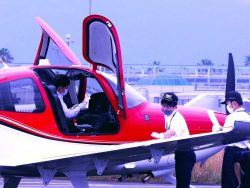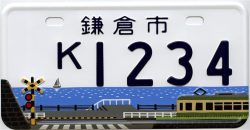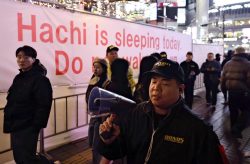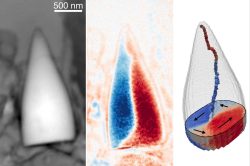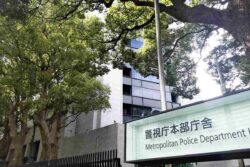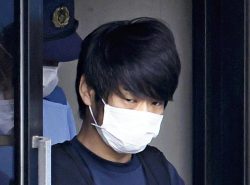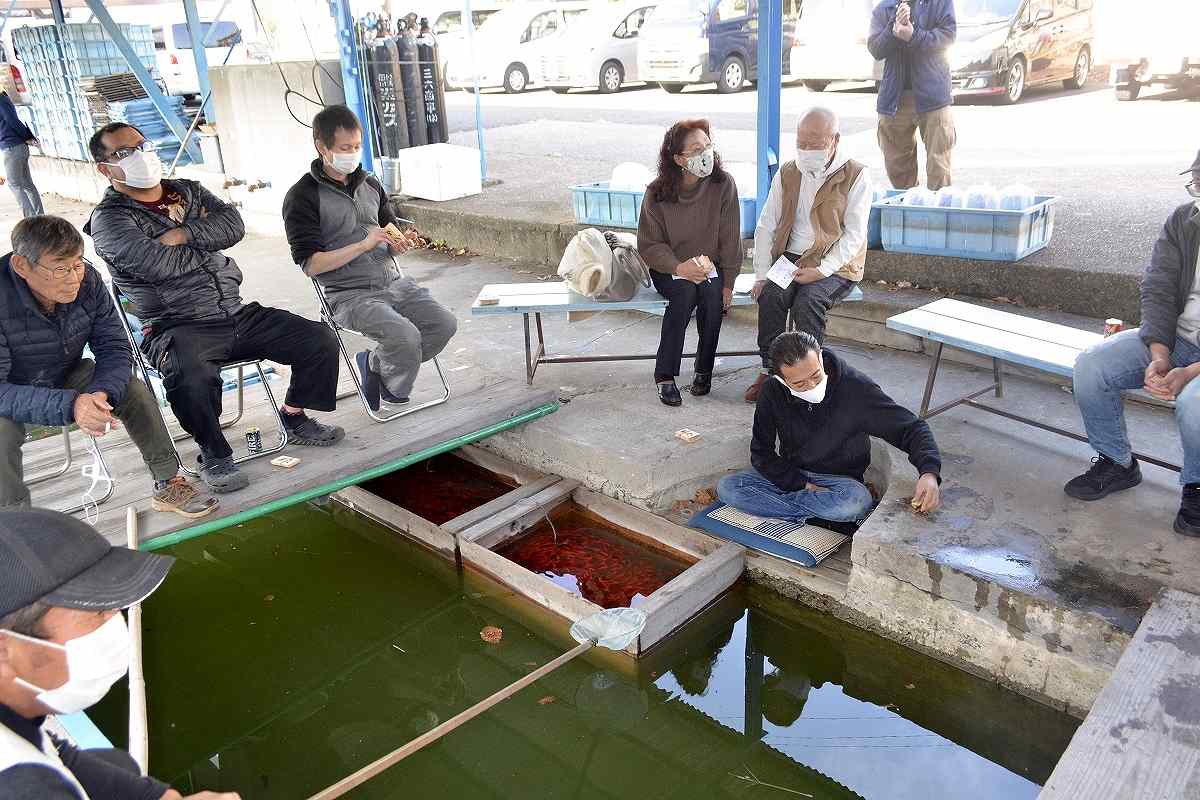
Goldfish wholesalers gather to attend an auction in Edogawa Ward, Tokyo, on Nov. 26.
13:41 JST, January 5, 2021
When thinking about a wholesale fish market, the hustle and bustle of the Toyosu Market in Koto Ward, Tokyo, which sells a wide variety of fish and other seafood, likely comes to mind. However, that image probably doesn’t include goldfish.
These kinds of fish can be found in Edogawa Ward, Tokyo.
The ward holds a goldfish festival every summer that attracts a huge number of visitors. Through these events, the ward is trying to promote its image of being “the home of goldfish.”
On Nov. 26, a goldfish auctioneer started the bidding at the market, which is operated by the Tokyo metropolitan association of cultured freshwater fish farming cooperatives in Funabori, Edogawa Ward. Auctions are held at the market, which opened in 1951, 33 times a year, and wholesalers from other prefectures including Kanagawa, Chiba and Saitama also attend.
At the market, the goldfish are sorted by type and placed into separate wooden boxes called “ikefune” or other containers and held in a holding tank.
“Tengan!” “Chomaru!” Bidders screamed out the jargon indicating the prices of a goldfish. As they won their bids, their names were written on paper tags that were then placed into the container that held their newly purchased goldfish. In about an hour, about 30,000 of the goldfish and medaka, or killifish, that were up for auction were sold. The most popular species were Ryukin and Kyariko.
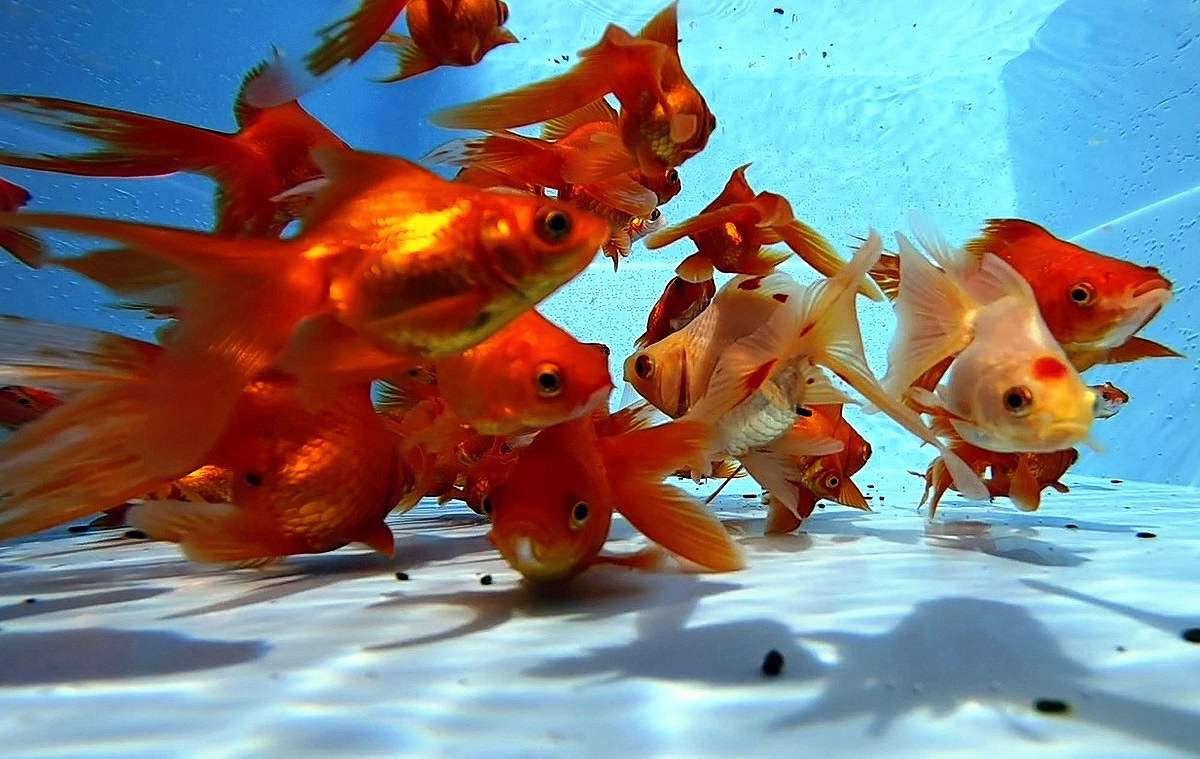
Ryukin goldfish
“The Edogawa market has a long history,” said Shigeki Oyama, 41, who has participated in the auctions for many years. “It is an indispensable market for wholesalers because high-quality goldfish are up for sale.”
According to data compiled by the ward and other materials, the theory is that goldfish originated in China and were introduced to Japan in 1502 during the Muromachi period (1336-1573). Goldfish farming in Edo (present-day Tokyo) started before the Genroku era (1688-1704) near the Shinobazunoike pond in present-day Taito Ward but also thrived in Iriya, also Taito Ward, and Nezu, Bunkyo Ward.
Goldfish initially gained popularity as pets for the wealthy and gained further popularity among ordinary residents during the Bunka-Bunsei era (1804-1830). As demand began to grow, goldfish farming thrived. Records show that present-day Koto, Sumida and Edogawa wards became the epicenter of goldfish farming.
After the 1923 Great Kanto Earthquake, the Sunamachi district of Koto Ward was developed as an industrial zone where reclamation work was conducted, making it difficult to secure a big enough pond to farm goldfish. As a result, Edogawa Ward emerged as one of the main areas to farm goldfish in the country. In 1954, 20, or two-thirds, goldfish farmers in Tokyo converged on the ward, having it become one of the top three goldfish production areas in Japan, along with Yatomi, Aichi Prefecture, and Yamatokoriyama, Nara Prefecture.
“One of the top three producers of goldfish,” and “the home of goldfish,” are the two phrases used on the Edogawa Ward website.
“Given the sharp drop in the number of goldfish farmers in the ward, I think it’s more appropriate now to use ‘the home of goldfish’ slogan,” said Yasunori Iwahisa, 49, an official of the ward’s industrial promotion section, in reference to the website’s slogans.
Hideaki Horiguchi, 69, who is the head of the Tokyo metropolitan association of cultured freshwater fish farming cooperatives and operates a fish farm in the ward, said there is only one other fish farmer in Tokyo other than him.
After the Eidan Chikatetsu Subway Tozai Line (present-day Tokyo Metro Tozai Line) fully opened in 1969, urban development was progressing in the ward and land prices surged. As expenses increased because of the rise in property tax, more and more fish farmers reportedly switched careers or moved their farms to places outside Edogawa Ward. Horiguchi himself has not raised goldfish in several years partly because his health had declined. He is currently making a living by selling freshwater fish.
Still, the ward’s main summer event, the Goldfish Festival, annually attracts 45,000 visitors, who can buy goldfish, see a fish exhibition and play a goldfish scooping game.
“Now that my health has recovered, I think I’ll try raising goldfish again next year,” Horiguchi said.
The day may come when Edogawa Ward becomes the epicenter of goldfish farming once again.
"Society" POPULAR ARTICLE
-

Tokyo’s Off Limit Areas Becoming Popular for Tours
-
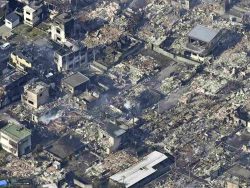
Fire Damages 170 Buildings in Oita, Western Japan
-

Tatsuya Nakadai, Japanese Actor, Dies at 92; Appeared in Films Including “The Human Condition” and “Ran” (UPDATE 1)
-

M5.7 Earthquake Hits Japan’s Kumamoto Pref., Measuring Upper 5 Intensity, No Tsunami Expected
-
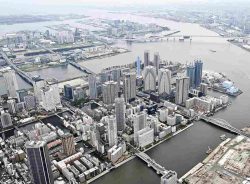
No Easy Fix for Tokyo’s Soaring Real Estate Prices
JN ACCESS RANKING
-

Govt Plans to Urge Municipalities to Help Residents Cope with Rising Prices
-

Japan Resumes Scallop Exports to China
-

Japan Prime Minister Takaichi Vows to Have Country Exit Deflation, Closely Monitor Economic Indicators
-

Japan to Charge Foreigners More for Residence Permits, Looking to Align with Western Countries
-

Japan GDP Down Annualized 1.8% in July-Sept.


